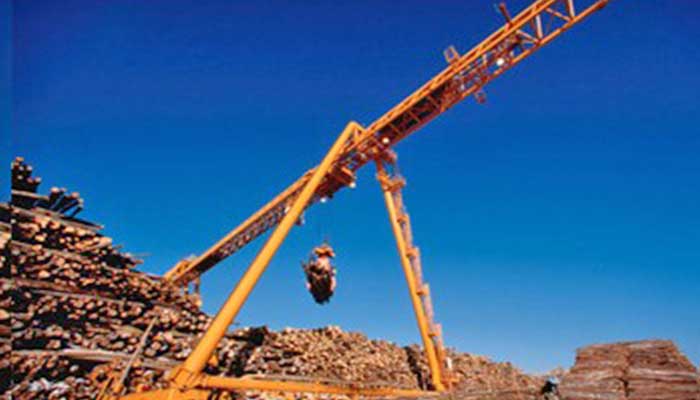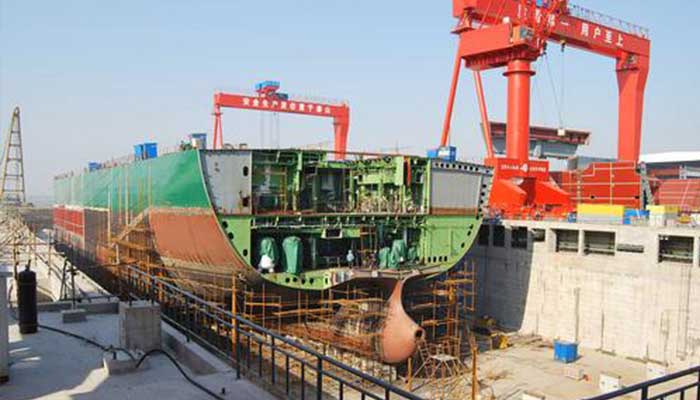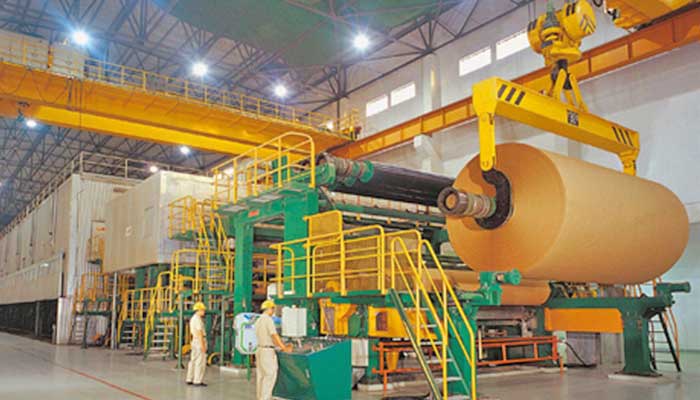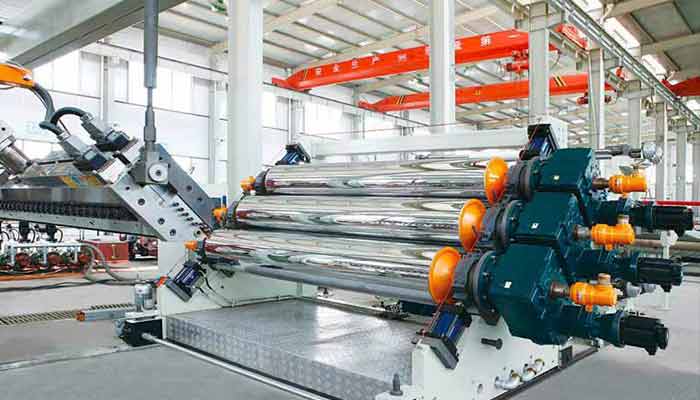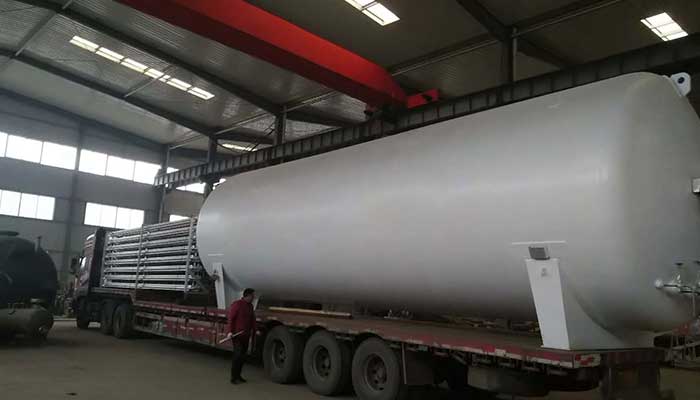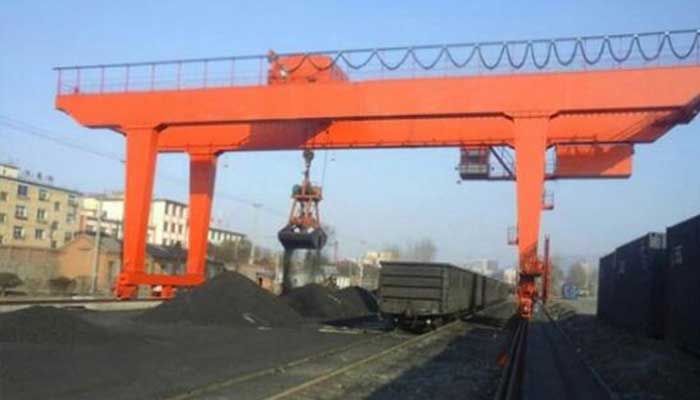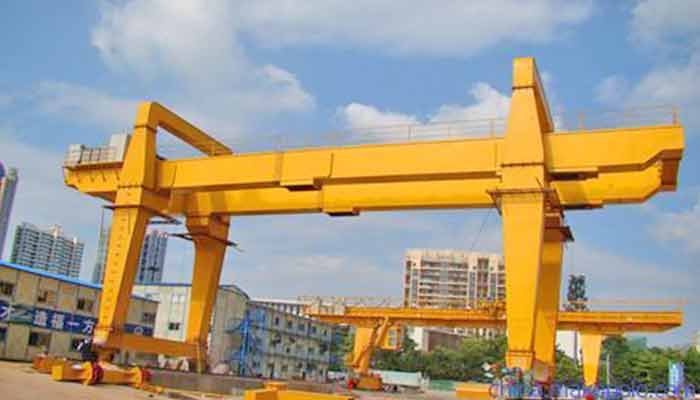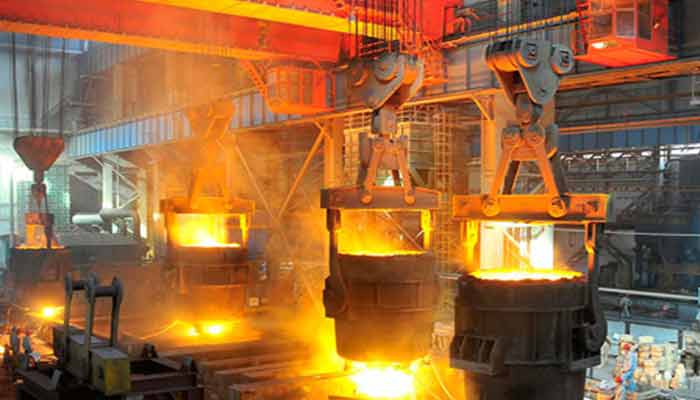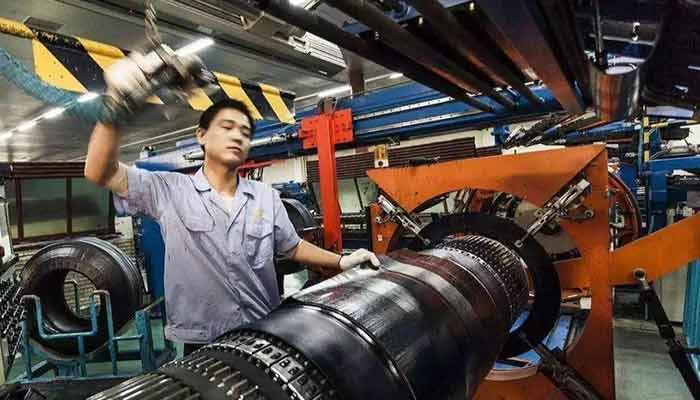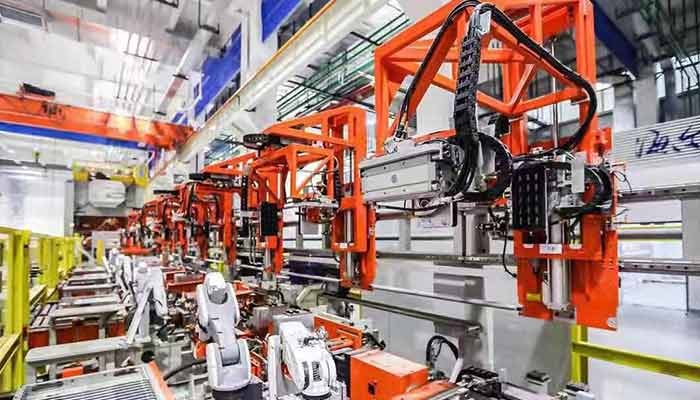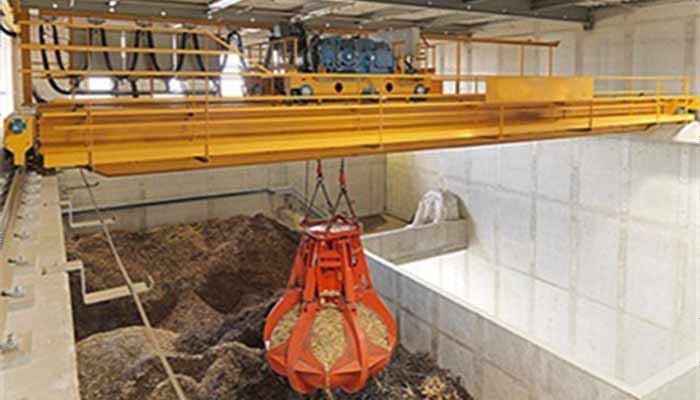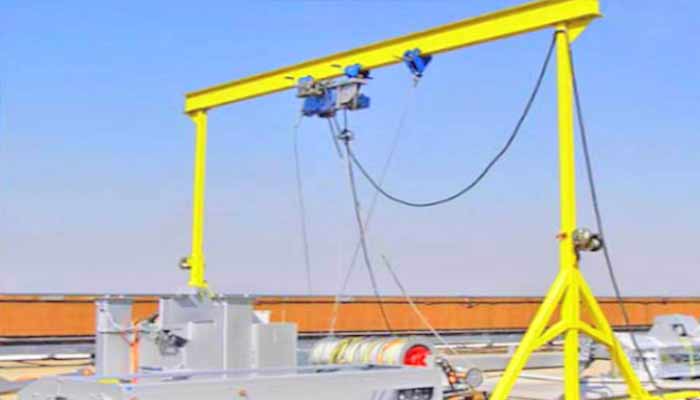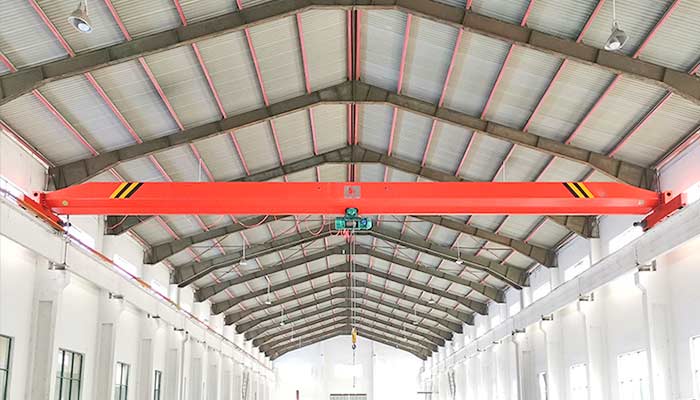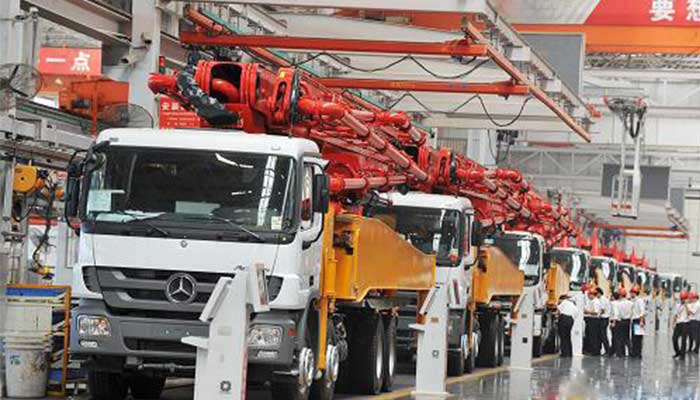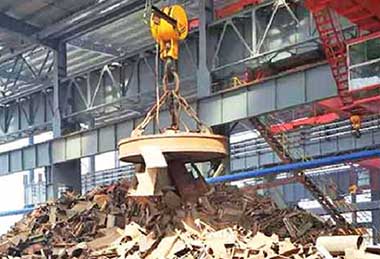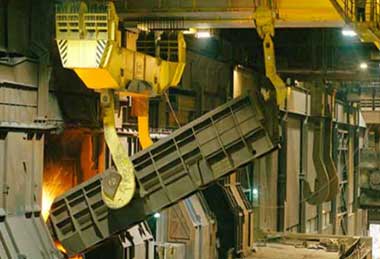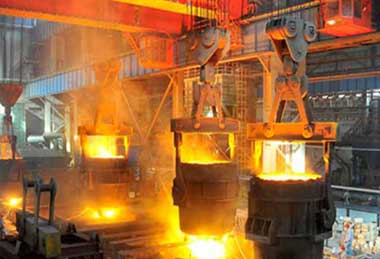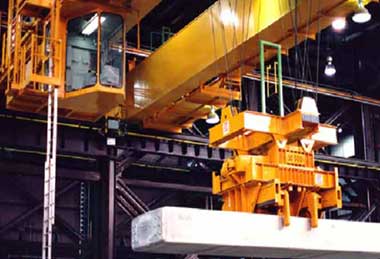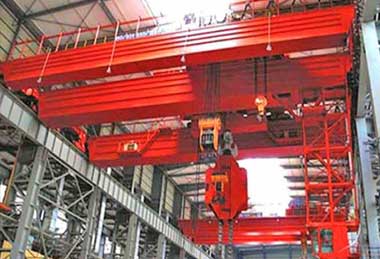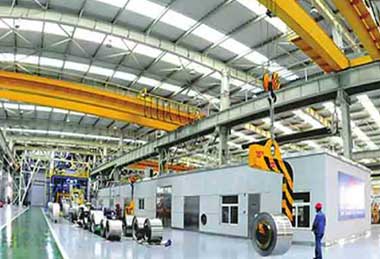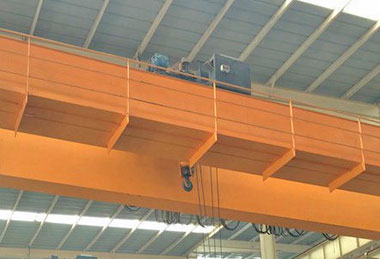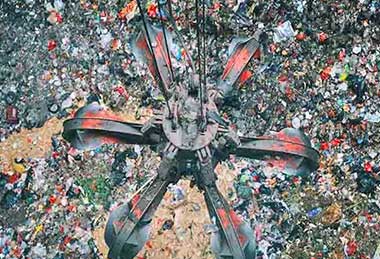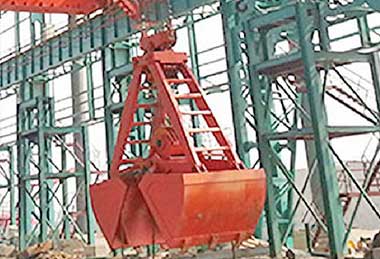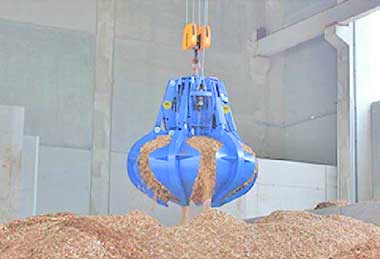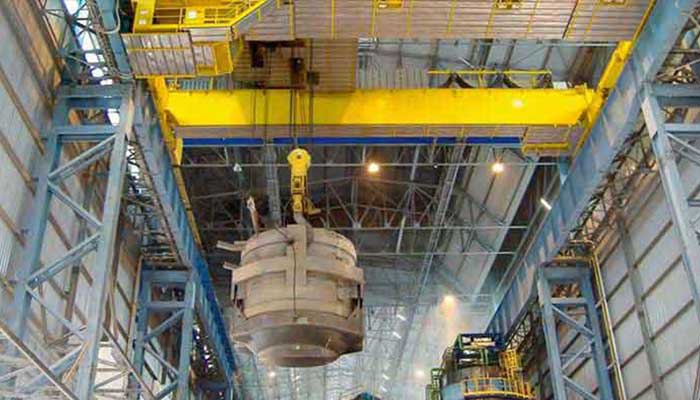
Process crane & Engineering Crane For Your Particular Setup
Engineered process cranes are fabricated to fulfill the specific needs of a special manufacturing process and conditions. When it comes to an engineered overhead crane system, process is key. Overhead cranes of this type are built to resist the rigors and repetition of performing a critical lifting action repeatedly.
A process crane is designed to deliver the following benefits to the end user:
- Maximum efficiency and safety
- Within a manufacturing shift, faster speeds and more starts/stops and lifts are required.
- Controls with high precision
- Components and systems that are more durable and well-engineered
These process cranes are typically characterized as heavy-duty cranes. The total hours of operation, the sorts of weights being lifted, and the amount of lifts or movements conducted each shift must all be carefully considered while building these cranes.
Compared to standard modular crane systems, these engineered crane systems have a higher capacity, higher duty cycle, perform a key role, and move at quicker speeds and with more precision.
- Engineered crane systems can also provide modern features and functionality to operators and production teams, such as:
- Crane speed and motion are controlled by automated drives.
- When many cranes are in use, collision avoidance techniques are used.
- Using lifting devices that are below the hook
- Remote diagnosis and monitoring
- Sensors and readouts for overload
- Detection of brake slippage
- Mechanical wear and maintenance are reduced.
Applications of processed cranes

Processed crane for metal processing industry - Ladle Crane with processed crane design & Charging Crane with processed crane design
Certain applications will always necessitate the use of a high-capacity, heavy-duty, and well-engineered overhead crane. The following applications will necessitate the employment of a crane that has been engineered:
- Steel mills and processing facilities, such as hot metal / ladle cranes, coil/bar/plate lifters, shipping and receiving cranes, magnetic scrap handling, and so on.
- Die handling and automotive stamping facilities
- Galvanizing facilities or other chemically active environments
- Paper mills
- Powerhouse and energy facilities
- Explosion-proof environments
- Bulk material handling or distribution
Why to select an engineered or process crane system?
Understand that an engineering crane system has several levels, each of which is focused on a certain process or lifting application. A process crane system used in a high-volume manufacturing plant will not have the same specifications or components as a crane used in a steel mill or a paper mill with a similar capacity.
These cranes are used when a high level of engineering is necessary and a "out of the box" solution will not suffice for a variety of reasons:
- Usage: This crane's use varies, but it's likely that it'll be in near-continuous or continual use, or that it'll be intended to travel at quicker rates, or that it'll be doing an extremely accurate and critical lift. When designing and selecting components for processed crane , heavy duty crane design are always taken into account.
- Applications : Steel mills and steel processing facilities, paper mills, powerhouses, high-output manufacturing facilities, distribution centers, and bulk material handling applications are just a few of the places where these cranes can be found.
- Price: Because there is more insight into the design, estimating, engineering, and manufacture of these types of cranes, they are much more expensive than a pre-engineered crane system.
- Lead Time: Obtaining specific components from many suppliers might take weeks to months, and then the manufacturer must be given time to fabricate or assemble these engineered crane systems. And also the process crane fabrication and electrical work also will take a long time. What's more, the installation of engineering crane might also take longer and cost more, comparing with modular crane or standard crane.
Engineered crane systems are frequently regarded as a crucial component of the manufacturing process. As a result, when a customer decides to invest in an engineered crane system rather than a modular crane kit, the procedure is very different.
Multiple stakeholders are usually involved in the consultation process, and the buyer is often considerably more knowledgeable about what they require. The customer has likely done some pre-engineering and may have a actual project specification that crane manufacturers should use for quoting purposes.
Engineered / Process Crane Components
Each individual component of a process crane in an engineered crane system is given considerable consideration and study. In this situation, the system shifts away from "plug and play" connections and toward more specialized and durable components that can withstand the lift's demands. The components are usually hardwired into the electrical panels.
- Engineered process cranes have extra "bells and whistles" that provide the following benefits to the end-user:
- Variable speed motors with encoders and flux vectors for precise load control
- More durable radio systems that enable for diagnostics and numerous crane operations are required.
- Movement of a high-speed bridge, a trolley, and a hoist
- Load placement and control with precision
- For particular settings, corrosion or spark resistance is required.
Engineered crane systems can also include some of these more specialized features:
- Hoist systems that have been built from the ground up
- Enhanced electrification (including I-beam cable festooning or energy chain) End trucks that are more sturdy and engineered
- Anti-sway technology and variable frequency drives (VFDs)
- Remote radio controllers / belly boxes for diagnostics and remote monitoring
- For explosion-proof surroundings, bronze wheels, hooks, and electrical seal-offs at the panel are required.
- For chemically active or harsh situations, galvanized components or specialist paint techniques are recommended.
- Magnetic or vacuum lifters, ladle hooks, coil hooks, die turners, lifting beams or spreader beams, and other integrated below-the-hook lifters
- Operators' open or enclosed cabs, engineered lifeline systems, and maintenance personnel's platforms or walkways
- Another advantage of having specialized components is that they're made to be easier to inspect, alter, repair, and maintain.
Disadvantages of an Engineered / Process Crane System
Highly specialized components necessitate highly skilled maintenance people or a crane and hoist service provider with experience and qualifications. To troubleshoot issues, perform inspections, and make adjustments or repairs on a process crane in a timely manner, whoever is performing inspections and maintenance on it must have a solid understanding of electrical and mechanical components—prolonging downtime can be costly to the bottom line and affect other production processes down the supply chain.
Because the material handling crane is so important to the manufacturing process, any unplanned downtime can have a significant financial impact the longer it is out of service—especially for companies that implement a just-in-time production strategy.
How to get a suitable process crane system for your application?
Always be honest and transparent with the manufacturers during the consultation while creating an overhead crane system that is suited for your company. They must have a complete awareness of any of the following considerations in order to appropriately specify the right crane system:
- Usage – How frequently will this crane be used? What will your production needs be in the next 3-5 years?
- Application — What will the crane be used for primarily? Is it going to be a vital lift or part of a critical process?
- Budget / Cost – What is the maximum amount you are willing to spend on lifting equipment? What will the cost of downtime be if the lifting crane equipment fails?
- Operating Environment - In what environment will this crane be used? Are there any specific environmental factors that might influence component design or sourcing?
- Special Features or Functionality — Do you want remote monitoring or diagnostics information available to maintenance personnel? Is it necessary for the crane to have variable speed controls, and if so, in which direction? Will it be necessary to use a specially designed below-the-hook lifting device?
We provide free quotes and consultations for overhead and material lifting projects because each business is unique and no two lifting cranes are alike. If you'd like to learn more about how an process overhead crane system can improve the efficiency and safety of your facility, or if you'd like to set up a consultation, please contact us today or to by WhatsApp: + 86 151 3871 1597. Contact us to see what we can do to for your material handling.

Orange peal grab bucket double girder overhead cranees
